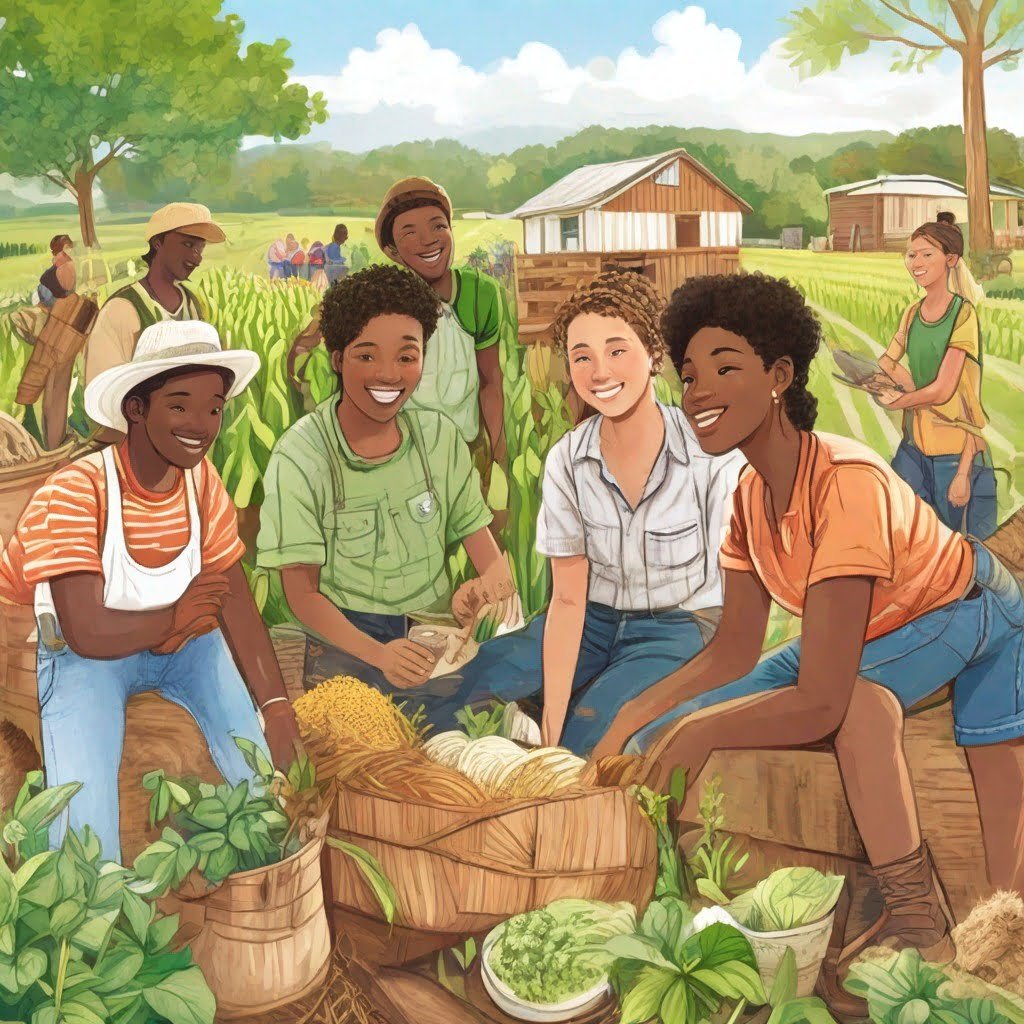Harvesting Hope: How Youth Can Thrive in Sustainable Agricultural Practices
Thank you for reading this post, don't forget to subscribe!
Did you know that globally, over 1.2 billion people are employed in agriculture, and yet, the average age of farmers is steadily rising? In the face of climate change and food security challenges, it’s imperative to cultivate a new generation of farmers who are not only skilled in traditional practices but also adept at incorporating sustainable methods into their operations. This blog post explores how youth-led agribusinesses can play a pivotal role in driving sustainable agricultural practices forward.
Did you know that globally, over 1.2 billion people are employed in agriculture, and yet, the average age of farmers is steadily rising? In the face of climate change and food security challenges, it’s imperative to cultivate a new generation of farmers who are not only skilled in traditional practices but also adept at incorporating sustainable methods into their operations. This blog post explores how youth-led agribusinesses can play a pivotal role in driving sustainable agricultural practices forward.
“The future of agriculture depends on our ability to nourish young minds.” – Michael Pollan.
The Rise of Youth-Led Agribusiness
Youth-led agribusinesses are increasingly becoming a driving force in the agricultural sector. With their fresh perspectives, innovative ideas, and tech-savvy approach, young farmers are reshaping the industry landscape. Leveraging keywords such as “youth entrepreneurship” and “agricultural innovation,” these enterprises are not only generating economic opportunities but also spearheading sustainable practices that prioritize environmental conservation and social responsibility.
Sustainable Agricultural Practices: A Blueprint for Success
Incorporating sustainable agricultural practices is no longer just a choice; it’s a necessity. From precision farming and organic cultivation to water conservation and agroforestry, there are myriad strategies available to farmers seeking to minimize their environmental footprint. By integrating keywords like “regenerative agriculture” and “permaculture design,” youth-led agribusinesses can cultivate resilience against climate change while fostering biodiversity and soil health.
Access to Resources and Support
Despite the potential for success, many young farmers face barriers to entry, including limited access to land, capital, and knowledge. Governments, NGOs, and private sector stakeholders play a crucial role in providing support mechanisms such as grants, training programs, and mentorship opportunities. By utilizing keywords such as “youth empowerment” and “agricultural subsidies,” policymakers can create an enabling environment that empowers youth to thrive in the agricultural sector.
Technology as a Catalyst for Innovation
Technology has emerged as a game-changer in modern agriculture, offering innovative solutions to age-old challenges. From drone technology and smart irrigation systems to blockchain-enabled supply chains, digital tools are revolutionizing the way food is produced, processed, and distributed. By integrating keywords like “agritech startups” and “digital agriculture,” youth-led agribusinesses can leverage cutting-edge technologies to enhance productivity, efficiency, and sustainability.
Building Sustainable Supply Chains
The journey from farm to fork encompasses a complex network of actors, each playing a vital role in ensuring food security and sustainability. By forging partnerships with stakeholders across the value chain, youth-led agribusinesses can create resilient supply chains that prioritize fair trade, ethical sourcing, and environmental stewardship. Keywords such as “food systems” and “supply chain transparency” underscore the importance of collaboration and accountability in creating a more sustainable future for agriculture.
Scaling Impact Through Advocacy and Education
Education and advocacy are powerful tools for driving systemic change in the agricultural sector. By raising awareness about the importance of sustainable agriculture and advocating for policy reforms, youth-led agribusinesses can amplify their impact and catalyze broader transformation. Keywords like “food sovereignty” and “youth activism” underscore the role of grassroots movements and community engagement in shaping a more equitable and sustainable food system.
Conclusion:
As we look ahead to the future of agriculture, one thing is clear: the success of sustainable practices hinges on the active participation of youth. By embracing innovation, collaboration, and a commitment to stewardship, young farmers have the opportunity to not only thrive in the agricultural industry but also lead the charge towards a more sustainable and equitable future. Join the conversation and share your thoughts on how we can empower youth in sustainable agriculture!
Ready to embark on your journey in sustainable agriculture? Whether you’re a budding entrepreneur or an advocate for change, there’s a role for you to play in shaping the future of farming. Reach out to local organizations, explore training programs, and connect with like-minded individuals to get started today!
Ten Questions:
- How can youth-led agribusinesses contribute to sustainable agriculture?
- What are the key challenges facing young farmers in the agricultural sector?
- How can policymakers support youth entrepreneurship in agriculture?
- What role does technology play in modernizing farming practices?
- How can youth-led agribusinesses build resilient supply chains?
- What are some examples of successful sustainable agriculture initiatives led by youth?
- How can education and advocacy empower young farmers to drive change?
- What are the economic opportunities associated with sustainable agriculture?
- What resources are available for aspiring young farmers?
- How can consumers support youth-led agribusinesses and sustainable farming practices?








Your article helped me a lot, is there any more related content? Thanks!
Can you be more specific about the content of your article? After reading it, I still have some doubts. Hope you can help me.